There is nothing more essentially Canadian than maple syrup. And while Canada doesn’t have exclusive rights to this sweet and slightly sticky condiment, it certainly is wrapped up in the Canadian mythos, at least for us here in Ontario and Quebec. Plus, several American states, especially Michigan and Vermont. And through the middle of March and into April is the season where the sap starts to run, and the sugar bushes are filled with steam as maple syrup is made. And while there are many large-scale producers, there are also many spots that host festivals where you can learn about the history, the process, and the use of this historically significant sweet stuff. So for the March roll, the family and I went to Mountsburg’s Maple Town.
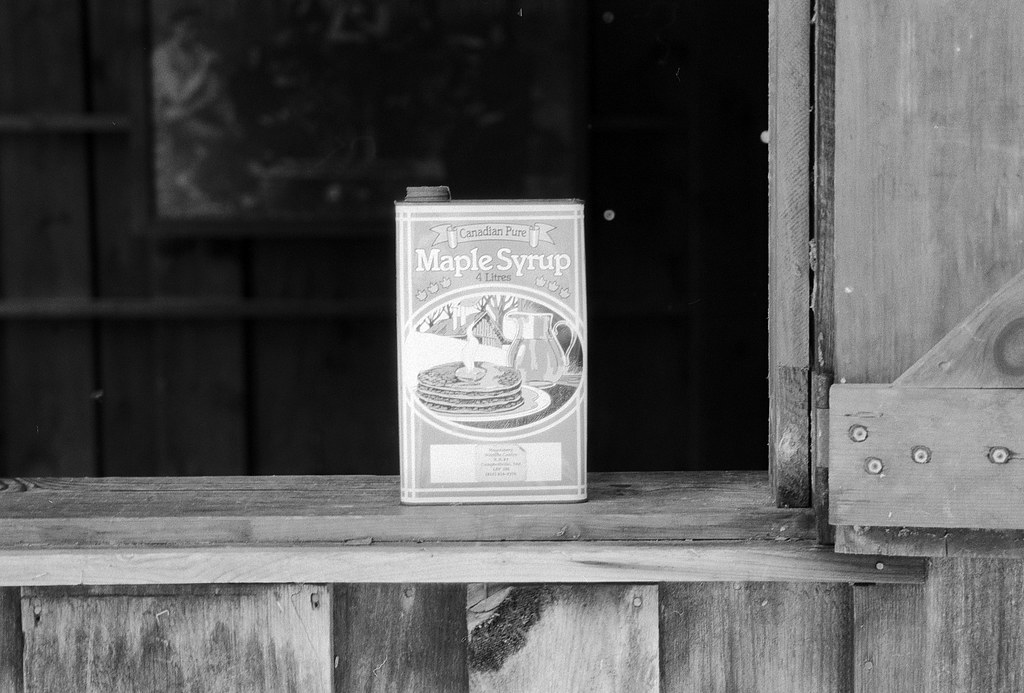
Minolta Maxxum 70 – Minolta Maxxum AF 28-100mm 1:3.5-5.6 D – Arista EDU.Ultra 100 @ ASA-100 – SPUR HRX (1+20) 10:15 @ 20C (Constant Rotation)
No one knows where the idea of boiling the sap from the maple tree into sweet syrup comes from. And while it has grown into a major industry through the 20th Century, it all starts in pre-contact North America. Most legends come from either the oral histories of the Haudenosaunee or the Anishinaabe. These speak of princes, women, and chiefs who discover that sweet water can be boiled down to make work or a meal. But in all cases, the trees are notched with a “V” shape, and the sap is collected and boiled down in a pot over an open fire. When contact with Europeans occurred, the Indigenous peoples shared their knowledge of sweet water. The journals of Jacques Cartier mention drinking either the sap or the syrup during their exploration of North America. Colonists made use of this knowledge to make it easier to get sweeteners. While the syrup was used, the sap could be further boiled down into a crystal form or maple sugar. Made domestically, maple sugar became a primary sweetener as cane sugar was a costly luxury imported from the Caribbean. But the process required large amounts of sap to produce small amounts of syrup or sugar because the sap boiling method had not changed, and the large iron pots on open fires were inefficient. The first flat pan was patented in 1858 that provided a larger surface area that reduced the amount of time needed and sap required. It was also around this time that the cost to import cane sugar came down to the point that most people could afford it, allowing the production of maple syrup to become a primary use of the sap. This method was further refined and improved upon, creating the modern evaporator that is still in use today; the collection of sap further improved in the later half of the 20th Century turning the collection and creation of sap into a multi-billion dollar industry that Quebec primarily leads.

Minolta Maxxum 70 – Minolta Maxxum AF 28-100mm 1:3.5-5.6 D – Arista EDU.Ultra 100 @ ASA-100 – SPUR HRX (1+20) 10:15 @ 20C (Constant Rotation)
Minolta Maxxum 70 – Minolta Maxxum AF 28-100mm 1:3.5-5.6 D – Arista EDU.Ultra 100 @ ASA-100 – SPUR HRX (1+20) 10:15 @ 20C (Constant Rotation)
Minolta Maxxum 70 – Minolta Maxxum AF 28-100mm 1:3.5-5.6 D – Arista EDU.Ultra 100 @ ASA-100 – SPUR HRX (1+20) 10:15 @ 20C (Constant Rotation)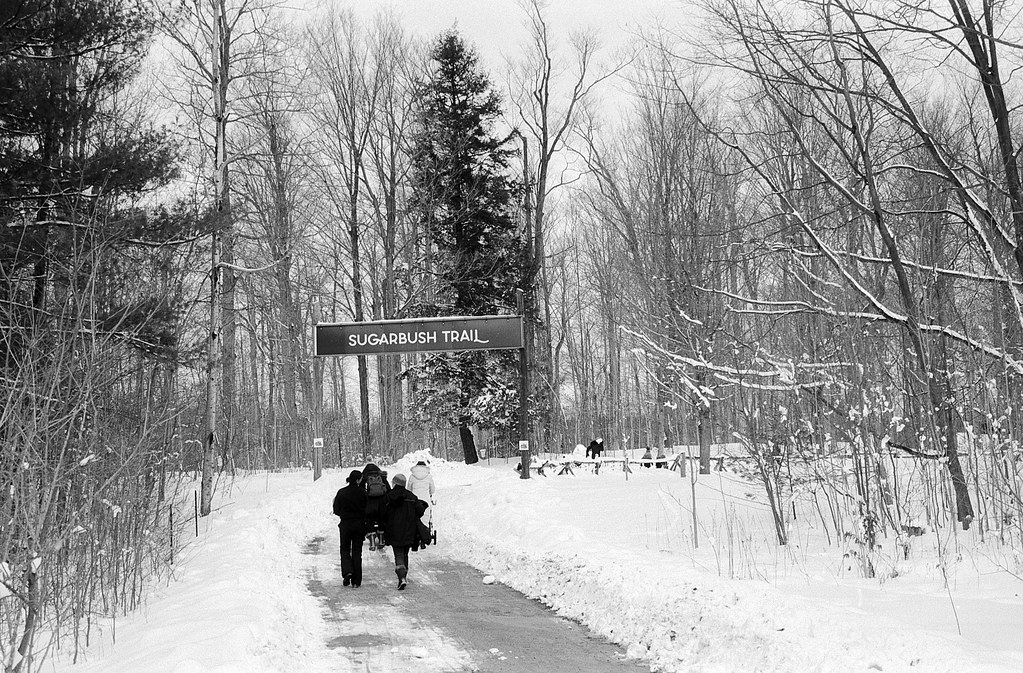
Minolta Maxxum 70 – Minolta Maxxum AF 28-100mm 1:3.5-5.6 D – Arista EDU.Ultra 100 @ ASA-100 – SPUR HRX (1+20) 10:15 @ 20C (Constant Rotation)
When you’re at a maple syrup festival, you want your main focus to be on the creation of the syrup. While there are plenty of photographic opportunities throughout Mountsburg, I focused on the areas around maple town, a selection of buildings in the middle of the sugar bush. I had an idea for what I wanted to act as the featured image. Sadly I was not 100% happy with that frame, so it never made the final cut, going with instead a historical container once used to hold Ontario maple syrup. One of many on display throughout the area. While the railway line shot is not directly related, it was popular among the other participants in the Frugal Film Project group. Of course, I included the displays of all the historical methods of producing maple syrup along with a lovely shot of their modern evaporator running well that day.

Minolta Maxxum 70 – Minolta Maxxum AF 28-100mm 1:3.5-5.6 D – Arista EDU.Ultra 100 @ ASA-100 – SPUR HRX (1+20) 10:15 @ 20C (Constant Rotation)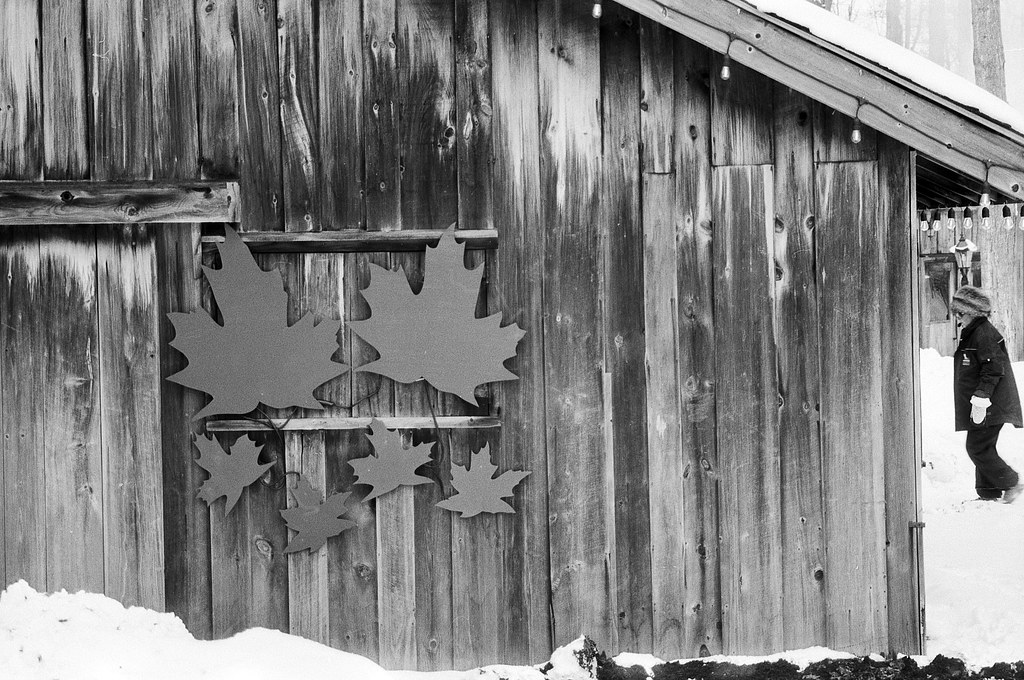
Minolta Maxxum 70 – Minolta Maxxum AF 28-100mm 1:3.5-5.6 D – Arista EDU.Ultra 100 @ ASA-100 – SPUR HRX (1+20) 10:15 @ 20C (Constant Rotation)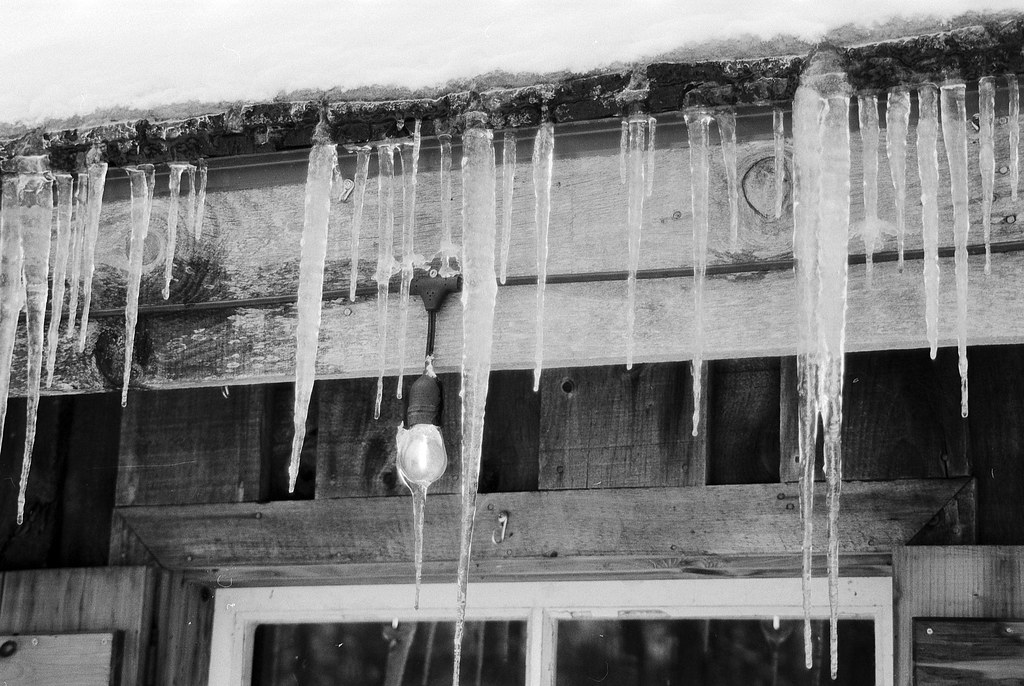
Minolta Maxxum 70 – Minolta Maxxum AF 28-100mm 1:3.5-5.6 D – Arista EDU.Ultra 100 @ ASA-100 – SPUR HRX (1+20) 10:15 @ 20C (Constant Rotation)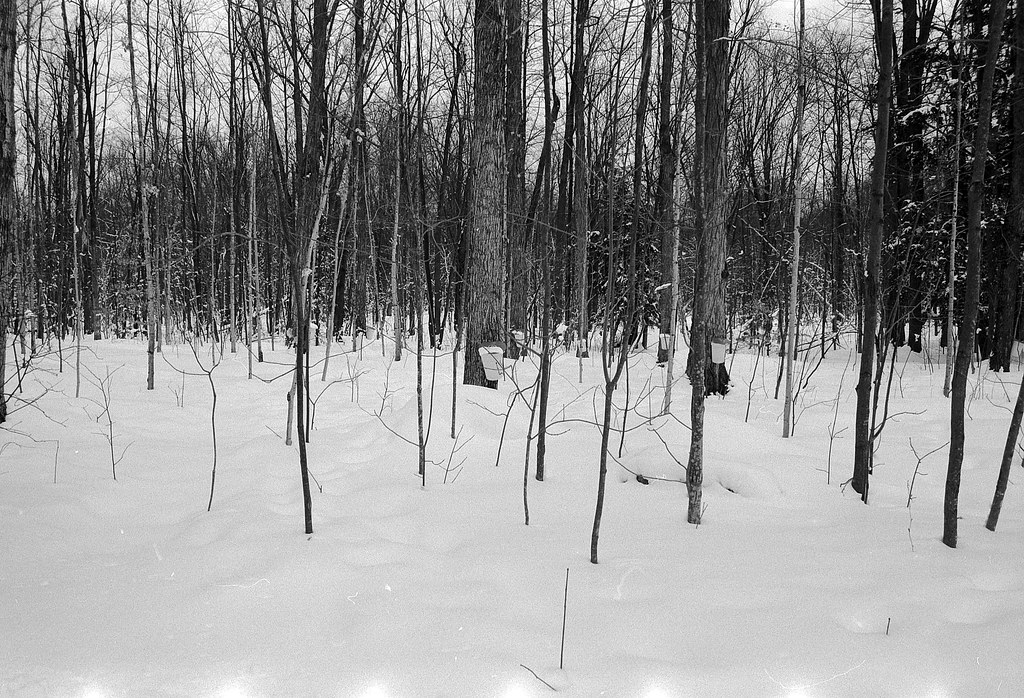
Minolta Maxxum 70 – Minolta Maxxum AF 28-100mm 1:3.5-5.6 D – Arista EDU.Ultra 100 @ ASA-100 – SPUR HRX (1+20) 10:15 @ 20C (Constant Rotation)
I’m continuing to work through some of my partly used bottles of developers, so I went with SPUR HRX and was blown away by two things. If you’ve worked with HRX before, you’ll know that this developer is designed to use an ideal film speed, but in the case of Arista 100, that is the standard box speed of ASA-100. It also produced excellent sharpness and tonality and did both these things with and beyond what I expected. These images are perhaps the sharpest I’ve ever seen with this film stock, and I have developed in Rodinal and 510-Pyro in the past. There is an increase in visible grain, but no surprise also. There is also some amazing contrast, although I’m sure in some cases, that’s because of the bright day and plenty of snow. It also made some frames under-exposed, so I had to do some work to get a usable scan. Overall, I’m pleased with these results and am certainly keeping this combination in mind for future rolls and more HRX.
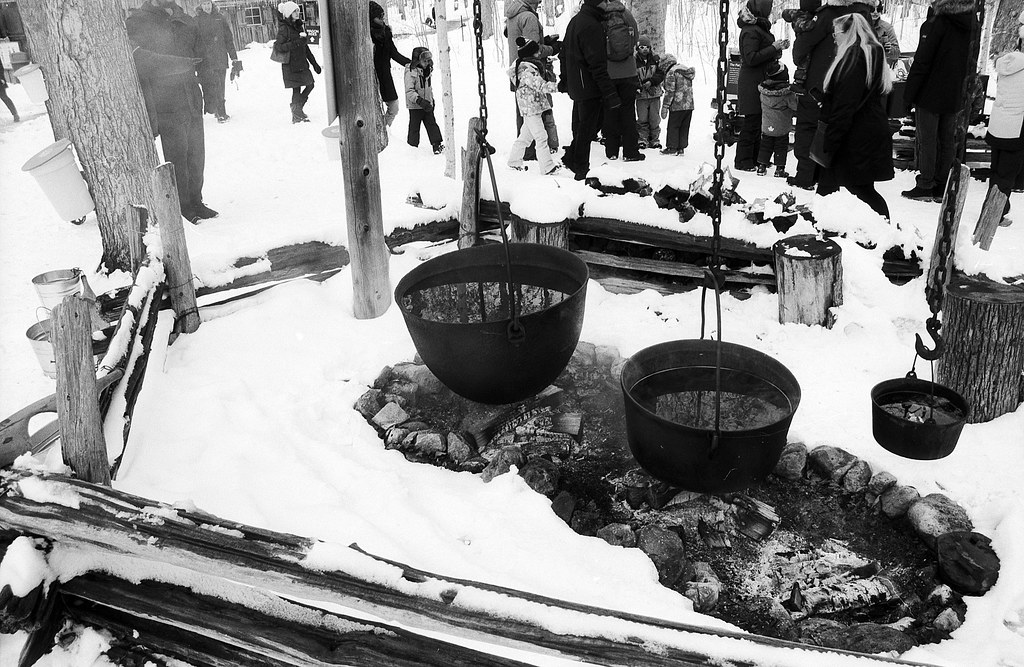
Minolta Maxxum 70 – Minolta Maxxum AF 28-100mm 1:3.5-5.6 D – Arista EDU.Ultra 100 @ ASA-100 – SPUR HRX (1+20) 10:15 @ 20C (Constant Rotation)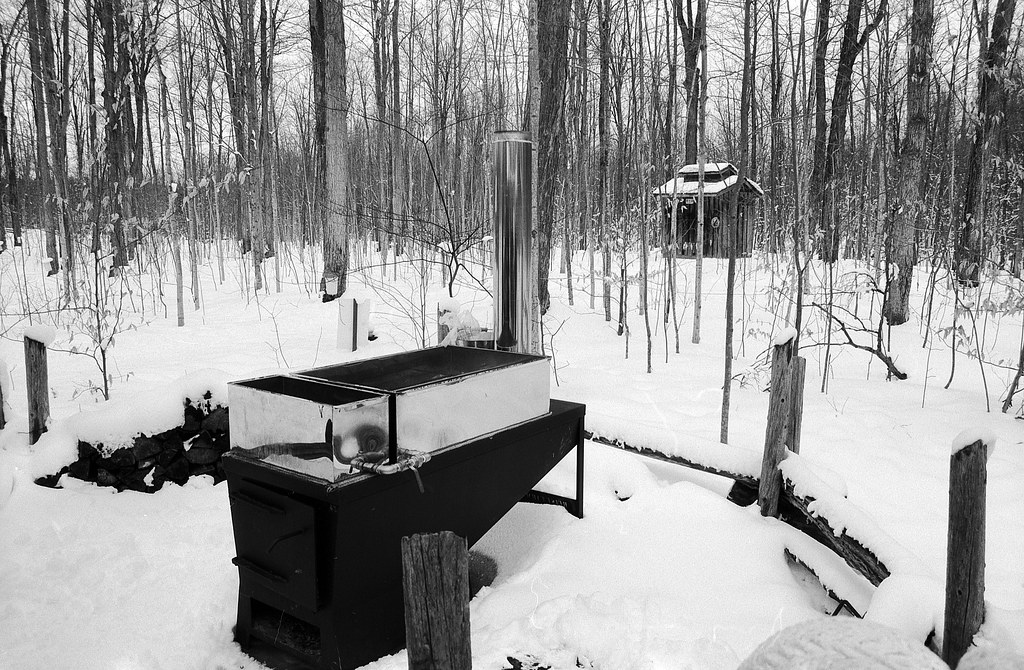
Minolta Maxxum 70 – Minolta Maxxum AF 28-100mm 1:3.5-5.6 D – Arista EDU.Ultra 100 @ ASA-100 – SPUR HRX (1+20) 10:15 @ 20C (Constant Rotation)
Minolta Maxxum 70 – Minolta Maxxum AF 28-100mm 1:3.5-5.6 D – Arista EDU.Ultra 100 @ ASA-100 – SPUR HRX (1+20) 10:15 @ 20C (Constant Rotation)
Minolta Maxxum 70 – Minolta Maxxum AF 28-100mm 1:3.5-5.6 D – Arista EDU.Ultra 100 @ ASA-100 – SPUR HRX (1+20) 10:15 @ 20C (Constant Rotation)
It’s always fun to take in a little Canadiana and have some excellent weather. And while having this much snow last month was a bit weird, it certainly was a great way to have family fun on the weekend! For April, we’re on the road and again exploring one of my favourite cities in Ontario, Stratford. Once known for its role in the growth of the railroad in Ontario. And a massive furniture making heritage, today it is best known for tourism and the theatre.